April 9: Georgia remembers those who died in struggle for independence
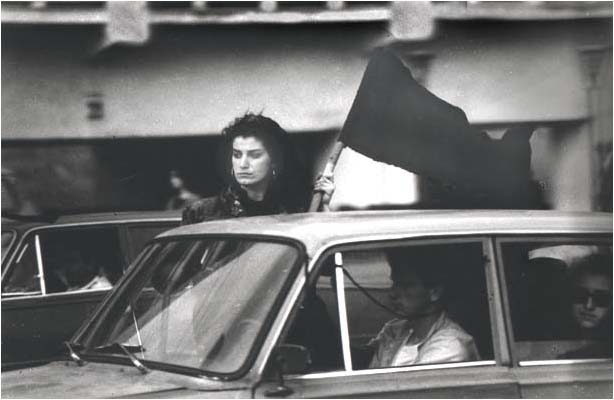
Georgia remembers those who lost their lives to Russian troops as they came out in support of Georgian independence 28 years ago today.
At least twenty people were tragically killed on April 9, 1989, at Soviet troops attacked peaceful protesters in the centre of Tbilisi.
The date has been etched into the minds of Georgian citizens and is remembered as the day of National Unity. It is recognised as a public holiday in Georgia.
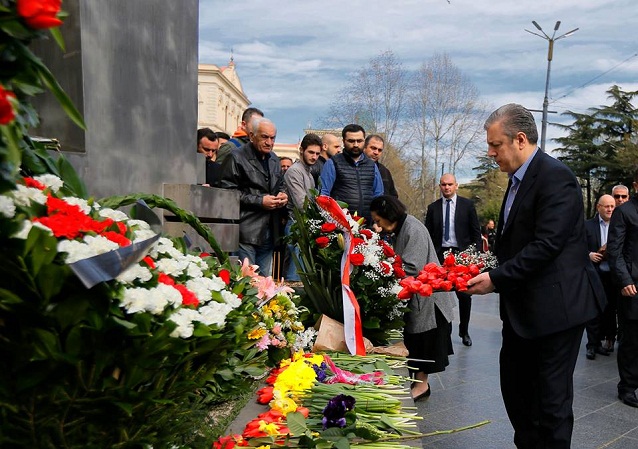
PM Kvirikashvili in front of the April 9 memorial. Photo: PM's press office
Georgian Prime Minister Giorgi Kvirikashvili, cabinet members and other officials gathered at the memorial before the Parliament building on Rustaveli Avenue in Tbilisi where the tragedy occurred, and lit candles and laid flowers to pay tribute to the people who died during the demonstration.
"This day is associated with the fight for independence and we should do our best to make Georgia united and independent and let the dream of those who were killed 28 years ago come true”, Kvirikashvili said.
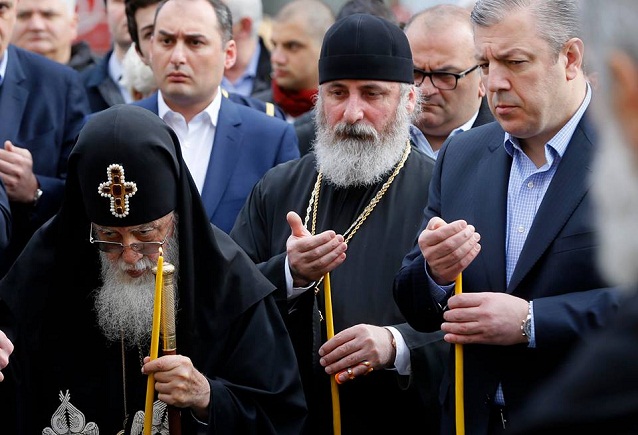
The leader of the Georgian government and the leader of the Georgian church pay tribute to the memory of those killed during the April 9 tragedy. Photo: PM's press office
The youngest victims of the April 9 tragedy were 16 years old.
From dawn this morning, families of the fallen and other community members gathered outside the Parliament Building to pay tribute to the victims.
Furthermore, April 9 also marks the restoration of Georgia’s independence, as the Georgian legislative body passed a declaration of independence in 1991 based on the results of the March 31, 1991 referendum, where an overwhelming majority of Georgians voted to secede from the Soviet Union.
Ani-Soviet movement in Georgia
The anti-Soviet movement became more active in the Georgia in 1988 when several strikes and meetings were organised by anti-Soviet political groups in Tbilisi. The reason behind the strikes was the conflict between the Soviet government and Georgian nationalists when several thousand Abkhazians, a Caucasian ethnic group, demanded to be granted full-republic status within the Soviet Union and restoration of the Union republic status of 1921–1931.
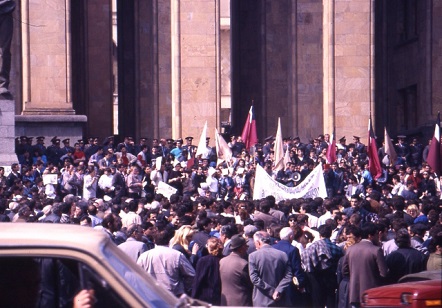
Peaceful demonstration before Parliament building, Tbilisi. Photo from burusi.wordpress.com
In response, the anti-Soviet groups organised a series of informal meetings across the republic and claimed the Soviet government was using Abkhaz separatism in order to oppose the pro-independence movement.
The protests reached their peak on April 4, 1989, when tens of thousands of Georgians gathered before the Government House on Rustaveli Ave in Tbilisi.
The protesters were led by the Independence Committee, which included Merab Kostava, Zviad Gamsakhurdia, Giorgi Chanturia, Irakli Bathiashvili, and Irakli Tsereteli, who organised a peaceful demonstration and hunger strikes, demanding the restoration of Georgia’s independence.
Local Soviet authorities lost control of the situation in the capital city and were unable to control the protests. First Secretary of the Georgian Communist Party Jumber Patiashvili asked USSR leaders to send troops to restore order.
April 9, a day of tragedy
In the evening of April 8, 1989, Colonel General Igor Rodionov, who was the Commander of the Transcaucasia Military District, ordered his troops to mobilise.
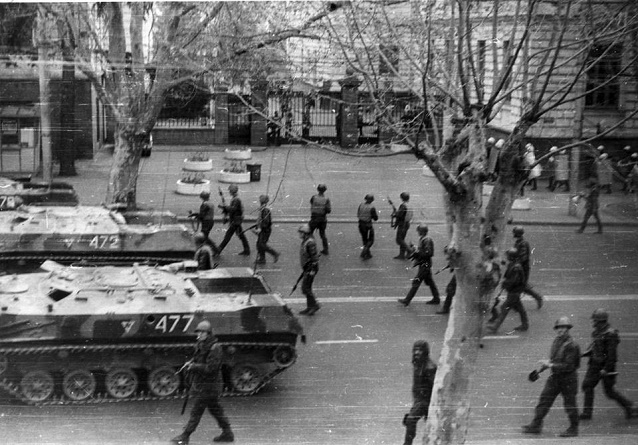
Russian tanks in Tbilisi streets in April 1989.
At 4 a.m. on April 9, special task units of the Soviet Army crushed protestors rallying to demand the independence of Georgia. Sixteen demonstrators were killed at the scene and four others died later from the injuries they sustained on that fateful day. Hundreds of activists were injured and needed medical attention.
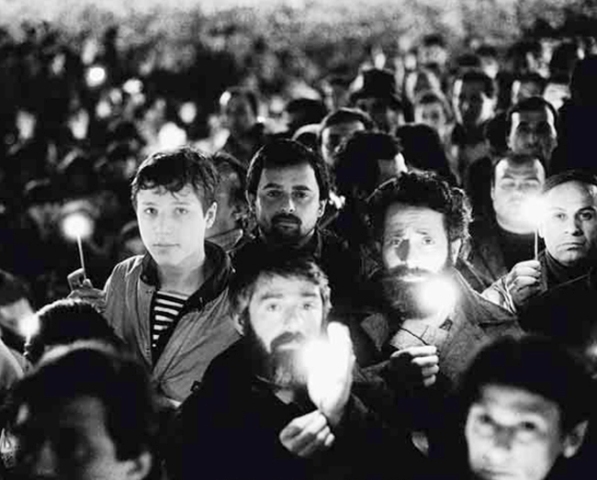
Demonstrators on April 9, 1989.
Autopsies conducted on the victims concluded 15 of the 16 people died as a result of suffocation caused by a combination of compression of the body and the inhalation of chemical substances. The other victim died from serious head and brain injuries.
The Soviet troops used toxic agents against the peaceful demonstrators. Later, from clinical and toxicological evidence, experts concluded that in addition to the use of one or two lachrymator (tearing) agents (CN and CS), Soviet troops most probably used a third toxic agent, called chloropicrin. Twenty people were killed, 16 of whom were women.
On April 10, the Soviet government issued a statement blaming the demonstrators for causing unrest and danger to the safety of the general public.

April 9 tragedy Victims Memorial desk. Most of them were young women.
The next day, Georgian television showed the bodies of the 19 women who were violently killed. The images demonstrated alleged brutality of the Soviet soldiers, as the faces of the deceased women were hard to identify because of the facial injuries and blows to the head the women sustained.
On March 31, 1991, Georgians voted overwhelmingly in favor of independence from the Soviet Union in a referendum. With a 90.5 percent turnout, the vast majority of the population (99 percent) voted in favour of Georgia becoming independent.
On April 9 on the second anniversary of the tragedy, the Supreme Council of the Republic of Georgia proclaimed Georgian sovereignty and independence from the Soviet Union.
 Tweet
Tweet  Share
Share